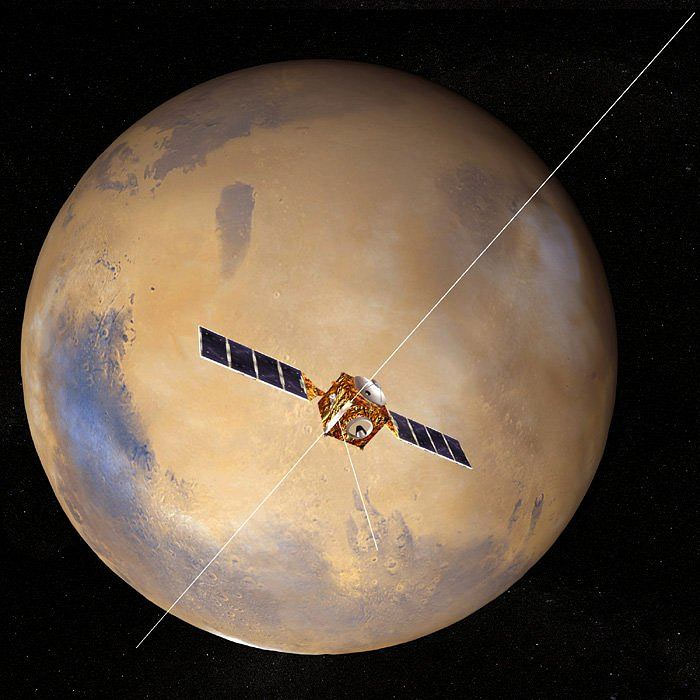Evidence of Mars contains enough oxygen to support life
US scientists have just released evidence that Mars may contain enough oxygen to grow life.
According to the latest research, experts working at the Jet Propulsion Laboratory in California (USA) have discovered that the saline layer below the planet's surface contains enough oxygen to support the life of bacteria. which has appeared and proliferated on Earth billions of years ago.
In some locations, oxygen is sufficient for multicellular organisms such as sponges to live. The study was published in the October issue of Nature Geosciences.

The image of Mars is provided by the European Space Research Agency on June 7, 2005.(Photo: EPA-EFE / VNA).
This is said to be a revolutionary discovery that helps change people's understanding of the possibility of life that might exist on Mars because so far, science still believes that oxygen accounts for only 0.14% in The atmosphere on this planet is not enough for bacteria to grow.
Currently the ratio of oxygen on Earth is 21%, just enough to serve human life. The study concluded that oxygen levels on Mars are higher than those of simple living organisms such as bacteria needed to grow. However, this is not synonymous with the claim that life currently exists in Mars.
The new study was carried out by scientists after the exploration robot of the US Aerospace Agency (NASA) called Curiosity discovered the existence of mangan oxide , a chemical compound that requires a lot of oxygen to shape. city.
Curiosity also discovered the existence of sea salt compounds. High concentration of sea salt allows water to maintain liquid form at low temperature and creates an ideal environment for bacteria to live.
Depending on the terrain, season of the year and time in a day, the temperature on Mars can range from -195 degrees Celsius to 20 degrees C. With the data collected, scientists have made Calculation model to determine which areas on Mars will be able to concentrate the sea salt compound to release the most oxygen.
In addition, experts have built a model for predicting Mars over the past 20 million years and about 10 million years from now. From there, create a premise to determine the location of the probe in the future.
- Discover more evidence of life on Mars
- Aliens may have been on Mars 3.8 billion years ago
- Discover the best location to search for life on Mars
- The soil on Mars has the ability to support life
- More evidence of life on Mars
- Video: Mars has the ideal conditions to produce oxygen
- Mars once had an oxygen-rich atmosphere like the Earth
- Oxygen appears on Mars before Earth 1.5 billion years
- More evidence that Mars had life
- Evidence shows that Mars has life
- Important evidence shows that Mars is more likely to have life
- Settling on Mars: Make water and oxygen
 Announced 3 houses on the Moon and Mars
Announced 3 houses on the Moon and Mars Science proves: Mars also knows 'deflated'
Science proves: Mars also knows 'deflated' Elon Musk announced the price for a Mars trip was 11.6 billion VND, free of charge
Elon Musk announced the price for a Mars trip was 11.6 billion VND, free of charge NASA discovered strange 'gate' on Mars, is the hiding place found?
NASA discovered strange 'gate' on Mars, is the hiding place found?